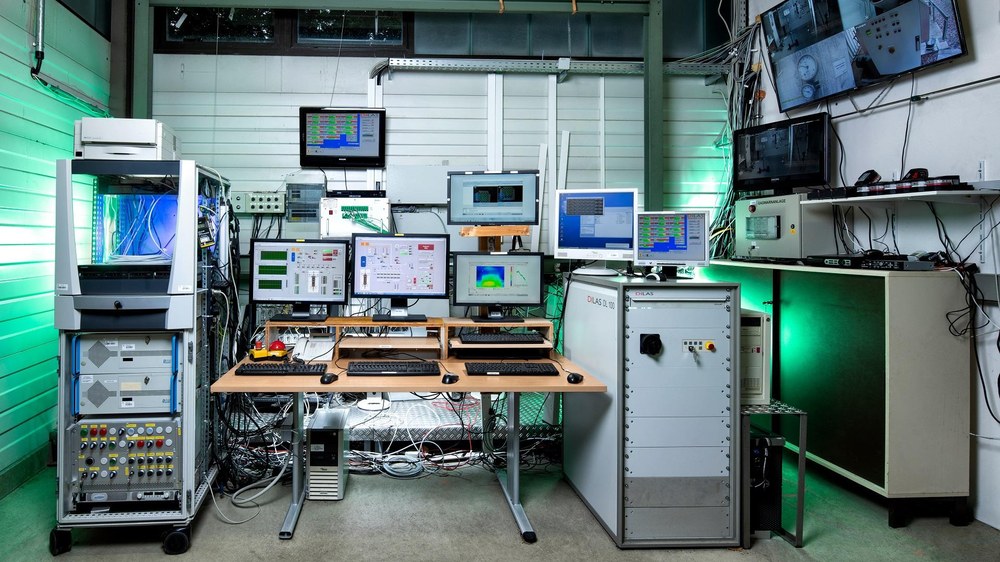TMF test bench at M51


The TMF test bench at the DLR Institute of Space Propulsion in Lampoldshausen is used to test TMF (thermo-mechanical fatigue) panels. These are small sections of an actively cooled rocket engine structure that faces hot gases, such as a combustion chamber wall, nozzle wall or nozzle extension wall. Exposed to a cyclic thermal load, TMF panels can be tested up to the point of fatigue-related failure.
Laser heating of test panels gives the TMF test bench three unique capabilities, which are not available from either full-scale or sub-scale rocket combustion chamber or thrust chamber tests:
- The surface temperature of thermally loaded wall structures can be measured with the aid of an infrared camera, without distortion of the optical temperature measurement caused by hot gas radiation.
Local heat flow and the high-temperature absorption coefficient of a surface can be determined by:
- Measuring the power density distribution of the TMF laser.
- Measuring the optical output power of the TMF laser.
- Testing the high-temperature absorption coefficient of a structure’s surface in the spectral range of the TMF laser.
- Using an optical deformation measuring system based on a stereo camera system and image correlation software, it is possible to measure the out-of-plane deformation and all three surface strain components of the thermally loaded structure both during the phases for cooling alone and in the event of additional thermal loading of the tested structure. This has been demonstrated up to a surface temperature of 1450 kelvin.
The test results can validate finite element structural analysis and methods of lifespan analysis for structures with a high thermal and mechanical load, as well as verifying methods for the accelerated testing of thrust chambers. The TMF test bench also enables the cost-effective testing of new combustion chamber, nozzle and nozzle extension wall materials such as copper- and nickel-based alloys – including when these are produced by new technologies such as selective laser melting. Experiments can determine how a component’s lifespan is affected by the following factors:
- Temperature
- Duration of thermal load (laser-on-hold time according to the hot running time for the engine)
- Pressure difference between the cooling system and thermally loaded range of the structure
- Heat flow in the coolant due to the thermally loaded structure
